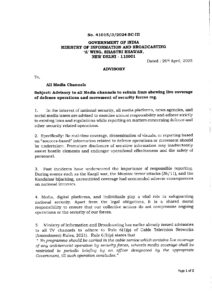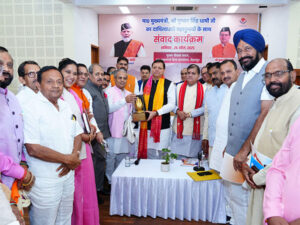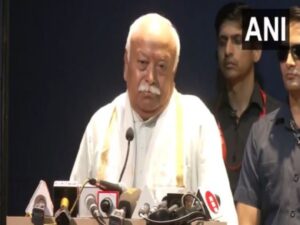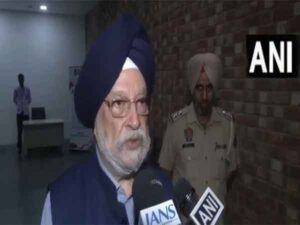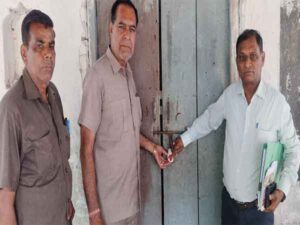Such sub-categorization is pointless, emotionless: RJD’s Manoj Jha after SC excludes ‘creamy layer’ from SC, ST quota
New Delhi [India], August 1 (ANI): After the Supreme Court ruled that states must identify the ‘creamy layer’ in the Scheduled Castes (SCs) and Scheduled Tribes (STs) and exclude them from quota benefits, Rashtriya Janata Dal (RJD) leader Manoj Jha on Thursday said that he respects the decision but this kind of sub-categorization reflects injustice and is pointless and emotionless.
Speaking with ANI, Jha said, “The honorable Supreme Court with its understanding has presented its side but I want to say “Milkiyat Jaane Bagair Batwaara Nahi Ho Sakta”, means unless you have substantial data with regard to each caste, we cannot know about their socio-economic standing (who stands where in terms of representation). If we will not know these things, then I think this kind of talks of sub-categorization reflects injustice and is pointless and emotionless.”
In a landmark judgement, the Supreme Court on Thursday ruled that states have the power to sub-classify Scheduled Castes and Scheduled Tribes (SCs and STs) and said that the authority concerned, while deciding if the class is adequately represented, must calculate adequacy based on effective and not quantitative representation.
The judgement was delivered by the seven-judge bench led by Chief Justice of India DY Chandrachud, which overruled earlier judgement in the EV Chinnaiah matter, which had held that sub-classification was not permissible because SC/STs form homogenous classes.
Justice Bela M. Trivedi, in a dissenting opinion, said that she disagreed with the majority judgement that sub-classification within the Scheduled Caste and Scheduled Tribes is permissible.
“The state for a valid exercise of power to sub-classify under Article 16(4), is required to collect quantifiable data with respect to the inadequacy of representation of the sub-categories in the services of the State. As held in the preceding section, the inadequacy of representation is an indicator of backwardness, and thus, using the cadre as a unit to determine representation alters the purpose of the indicator itself. The state, while deciding if the class is adequately represented, must calculate adequacy based on effective and not quantitative representation,” CJI Chandrachud said.
In a judgement written by Chief Justice Chandrachud and Manoj Misra, they opined that Article 14 of the Constitution permits sub-classification of a class that is not similarly situated for the purpose of the law.
“The Constitution does not bar the allocation of a percentage of seats to a caste since every caste is a class. However, the state must have sufficient material to prove inter-se backwardness between each of the castes. The state must, with the submission of cogent material, prove that there is a rationale principle that distinguishes the groups included and those excluded from the class,” CJI said.
“However, the rational principle will have a nexus with the object only when the principle can identify the inter-se social backwardness of the class. For example, if the state allocates a separate percentage of seats for the dhobi caste and the barber caste, it must prove that these two castes suffer from differing levels of social backwardness. It is not merely sufficient for the State to base the classification on the difference in the traditional occupation of the two castes. Rather, the state must, on the basis of quantifiable data, prove that the castes suffer from different levels of social backwardness. The state must also support this with the submission of data on effective representation of the caste in the services of the state,” the CJI added.
“Though sub-categorization based on each caste is permissible, we are of the opinion that there can never be a situation where seats are allocated for every caste separately. Though each caste is a separate unit, the social backwardness suffered by each of them is not substantially distinguishable enough to warrant the state reserving seats for each caste. If the social backwardness of two or more classes is comparable, they must be grouped together for the purposes of reservation,” CJI said.
“Article 14 of the Constitution permits sub-classification of a class that is not similarly situated for the purpose of the law. The Court, while testing the validity of sub-classification, must determine if the class is a homogenous integrated class for fulfilling the objective of the sub-classification. If the class is not integrated for the purpose, the class can be further classified upon the fulfilment of the two-prong intelligible differentia standard,” CJI Chandrachud said.
“In Indra Sawhney (supra), this Court did not limit the application of sub-classification only to the Other Backward Class. This Court upheld the application of the principle to beneficiary classes under Articles 15(4) and 16(4),” he added.
“Article 341(1) does not create deeming fiction. The phrase “deemed” is used in the provision to mean that the castes or groups notified by the President shall be “regarded as” the Scheduled Castes. Even if it is accepted that the deeming fiction is used for the creation of a constitutional identity, the only logical consequence that flows from it is that castes included in the list will receive the benefits that the Constitution provides to the Scheduled Castes. The operation of the provision does not create an integrated homogenous class,” CJI Chandrachud said.
“Sub-classification within the Scheduled Castes does not violate Article 341(2) because the castes are not per se included in or excluded from the List,” he added.
“Sub-classification would violate the provision only when either preference or exclusive benefit is provided to certain castes or groups of the Scheduled Castes over all the seats reserved for the class,” CJI Chandrachud said.
“Historical and empirical evidence demonstrates that the Scheduled Castes are a socially heterogenous class. Thus, the state, in exercise of the power under Articles 15 (4) and 16 (4), can further classify the Scheduled Castes if (a) there is a rational principle for differentiation; and (b) the rational principle has a nexus with the purpose of sub-classification,” he added.
The CJI, while overruling the Chinnaiah judgement that sub-classification of the Scheduled Castes is impermissible, also mentioned the scope of sub-classification of the Scheduled Castes, which is that the objective of any form of affirmative action, including sub-classification, is to provide substantive equality of opportunity for the backward classes.
“The state can sub-classify, inter alia, based on inadequate representation of certain castes. However, the State must establish that the inadequacy of representation of a caste/group because of its backwardness,” the CJI said.
“The state must collect data on the inadequacy of representation in the ‘services of the state’ because it is used as an indicator of backwardness; and Article 335 of the Constitution is not a limitation on the exercise of power under Articles 16(1) and 16(4). Rather, it is a restatement of the necessity of considering the claims of the Scheduled Castes and the Scheduled Tribes in public services.
The efficiency of administration must be viewed in a manner that promotes inclusion and equality as required by Article 16(1),” CJI said.
Justice BR Gavai, who suggests identifying the creamy layer in SC/STs category, also holds that E.V. Chinnaiah’s judgement, which held that sub-classification amongst the Scheduled Castes for the purpose of giving more beneficial treatment to a group in the larger group of the Scheduled Castes is not permissible, does not lay down a good law.
“That sub-classification amongst the Scheduled Castes for giving more beneficial treatment is permissible in law. To do so, the state will have to justify that the group for which more beneficial treatment is provided is inadequately represented as compared to the other castes in the said list,” Justice Gavai said.
Justice Gavai said that while doing so, the state will have to justify the same on the basis of empirical data that a sub-class in whose favour such more beneficial treatment is provided is not adequately represented.
He also said that while providing for sub-classification, the state would not be entitled to reserve 100 per cent of the seats available for Scheduled Castes in favour of a sub-class to the exclusion of other castes in the list.
Gavai said that such a sub-classification would be permissible only if there is a reservation for a sub-class as well as the larger class.
He also said that the finding of M. Nagaraj, Jarnail Singh and Davinder Singh to the effect that the creamy layer principle is also applicable to Scheduled Castes and Scheduled Tribes lays down the correct position of the law, that the criteria for exclusion of the creamy layer from the Scheduled Castes and Scheduled Tribes for the purpose of affirmative action could be different from the criteria as applicable to the Other Backward Classes, Justice Gavai said.

